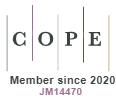Effective strategy of the testis fixation in Wistar rat to evaluate the morphological and morph metric parameters of seminiferous epithelium
DOI:
https://doi.org/10.5585/conssaude.v7i2.946Keywords:
Agentes fixadores, Epitélio seminífero, Espermatogênese, Glutaraldeído 4%, Testículo.Abstract
Testis of mammals is a susceptible organ to environmental toxic or therapeutic agents that compromise spermatogenesis process, and seminiferous tubules analysis (morphological and morph metric parameters) is a simple strategy to evaluate changes in the process. Therefore, strategies for collection, fixation and staining of the biological sample (tissue) are essential to preserve the morphological characteristics and ensure the effectiveness of the analysis and accuracy of diagnosis. However, the fixation of biological material is one of the most critical steps in histological preparing, mainly in the testis. Thus, the objective of this study was to evaluate different strategies for fixing the testis to an appropriate technique for the analyses of the morphological seminiferous epithelium of rats. Wistar rats were sacrificed and the testis collected according to various protocols for fixation. The perfusion with glutaraldehyde 4% and inclusion by historesin technique were the most appropriate methods to achieving histological processing, as the seminiferous tubules morphology and interstitial compartment were preserved.Downloads
Download data is not yet available.
Downloads
Published
2008-11-26
How to Cite
1.
Pannocchia MA, Borella MI, Camargo ACM de, Gilio JM, Silva CA. Effective strategy of the testis fixation in Wistar rat to evaluate the morphological and morph metric parameters of seminiferous epithelium. Cons. Saúde [Internet]. 2008 Nov. 26 [cited 2024 Nov. 12];7(2):227-34. Available from: https://uninove.emnuvens.com.br/saude/article/view/946
Issue
Section
Artigos
License
Copyright (c) 2008 ConScientiae Saúde

This work is licensed under a Creative Commons Attribution-NonCommercial-ShareAlike 4.0 International License.







